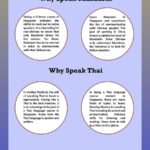Embark on a captivating journey through Singapore’s nation-building history, chronicled in “Singapore’s Nation-Building History: A Journey of Transformation.” This comprehensive account delves into the city-state’s formative years and its remarkable transformation into a global financial hub.
Key Takeaways:
- Singapore’s nation-building process started later than many other countries.
- The “Singapore Story” is an official narrative that shapes Singapore’s history and identity.
- History education is important in Singapore, especially in “National Education.”
- Nation-building efforts have included military conscription, providing public goods, education, and residential integration.
- Singapore’s use of history in nation-building is not limited to propaganda but is part of a broader effort to shape the country’s identity.
Singapore’s Nation Building History

Early Days and British Rule
Singapore began as a small fishing village in the 14th century. In 1819, Sir Stamford Raffles established it as a British trading post, and it swiftly grew into a thriving hub for trade and commerce.
World War II and Japanese Occupation
During World War II, Singapore was occupied by Japan from 1942 to 1945. The occupation had a profound impact on the city and its people, leaving behind a legacy of both hardship and resilience.
Independence and Self-Governance
In 1959, Singapore achieved self-governance, and in 1965, it became an independent republic. Lee Kuan Yew, Singapore’s first Prime Minister, played a pivotal role in guiding the nation’s early years.
Economic Development and the Asian Tigers
After independence, Singapore embarked on a rapid economic development plan, transforming itself into a manufacturing hub and later becoming one of the “Asian Tigers.” Its economic success was due to factors such as political stability, a skilled workforce, and a favorable business environment.
Social Cohesion and National Identity
Creating a unified society amid its multi-cultural population was a challenge for Singapore. The government implemented policies such as mandatory military conscription, public housing distribution, and language education to foster social cohesion and a sense of national identity.
Global Hub and Vision for the Future
Today, Singapore is a global financial center and a leader in healthcare, education, and technology. It continues to aspire for the future, investing heavily in innovation and sustainable development.
The “Singapore Story” and History Education
The “Singapore Story” is a national narrative used to shape the history and identity of Singapore. Since the 1980s, history education has been emphasized in schools, particularly in the context of “National Education.” This has played a significant role in shaping the way Singaporeans understand their past and their place in the world.
Conclusion
Singapore’s nation-building process is an ongoing journey. By examining the key events and individuals that shaped its past, we gain insight into how the nation has evolved into the vibrant and successful city-state it is today.
To uncover the fascinating story of Singapore’s past and present, delve into the captivating history of Singapore.
Dive into the rich tapestry of Singaporean history to unravel the vibrant and multifaceted tale of this nation.
Explore the dynamic evolution of Singapore culture, a vibrant fusion of traditions and influences that have shaped its unique identity.
Independence and Self-Governance

Yearning for Independence
Initially, Singaporeans showed little interest in self-governance. Only the unlawful communist party advocated for the British to leave.
Partial Internal Self-Government (1955-1959)
David Marshall became Singapore’s first Chief Minister, but his government faced instability.
Full Internal Self-Government (1959-1963)
The People’s Action Party (PAP) won the 1959 elections, securing 43 out of 51 seats. The PAP focused on the Chinese-speaking majority.
Campaign for Malaysia
The PAP proposed merging Singapore with Malaysia.
Key Takeaways:
- Self-governance evolved gradually for Singapore.
- British colonial rule lasted from 1819 until Singapore’s separation from Malaysia in 1965.
- The Rendel Constitution (1954) increased local representation.
- Singapore gained full internal self-government in 1959.
[Source: Wikipedia:
Economic Development and the Asian Tigers
Singapore’s Rapid Rise
Singapore’s economic development was a cornerstone of its nation-building journey, propelling it from a humble fishing village to a global financial hub.
It became one of the renowned “Asian Tigers,” experiencing rapid economic growth in the post-independence era. This was largely due to a “developmental state” approach, where the government played a pivotal role in fostering industry through policies like:
- Export-orientation
- Investment in infrastructure
- High levels of education and skilled labor
Government’s Role
The government’s active involvement in the economy extended beyond policymaking. It invested heavily in public housing, healthcare, and education. These investments laid the foundation for a productive and competitive workforce.
Global Hub
Singapore’s strategic location and its government’s commitment to economic growth made it a magnet for foreign investment. It transformed from a manufacturing hub to a center for finance, technology, and innovation.
Key Takeaways:
- The “Asian Tigers” achieved economic success through a “developmental state” approach.
- Singapore’s government played a key role in promoting economic growth through targeted policies.
- High levels of education and a skilled labor force contributed significantly to Singapore’s economic achievements.
Citation:
Social Cohesion and National Identity
Key Takeaways:
- Singapore proactively cultivates a strong national identity, emphasizing a shared history and contributions to society.
- History education plays a pivotal role in shaping national values and fostering a sense of belonging.
- Community centers serve as hubs for social interaction, fostering cohesion and grassroots leadership.
- Shared experiences and a focus on collective progress promote a sense of unity among Singaporeans.
- The government actively fosters social harmony by promoting tolerance and respect for diversity.
History education in Singapore emphasizes the study of the nation’s struggles, achievements, and shared values. This learning helps cultivate a sense of pride, belonging, and a deeper understanding of Singapore’s unique identity. Additionally, community centers play a crucial role in fostering social cohesion. They provide accessible recreational and social activities that facilitate community engagement and grassroots leadership.
Citation:
Chia, E. S. (2002). The teaching of history in Singapore: Issues and challenges. In History education in East Asia (pp. 151-174). Springer, Dordrecht.
















